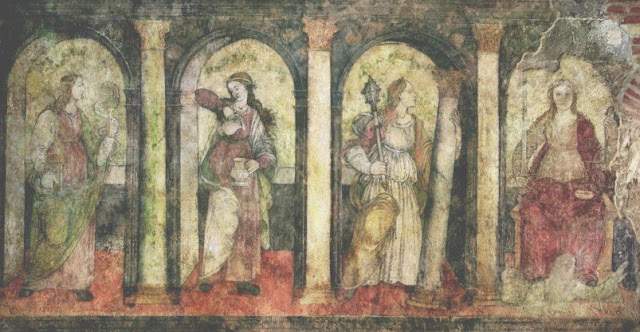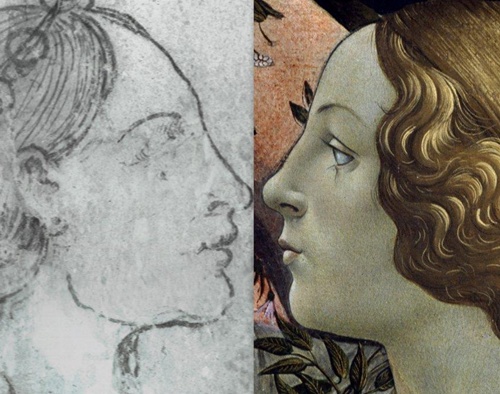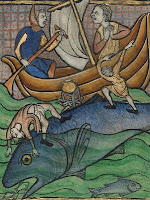 |
Temperantia
Esztergom, Studiolo of palace
Photo via artmagazin |
I did not want to write this post. A great discovery has been announced a few years ago (frescoes painted by Botticelli have been identified in Esztergom!) but I still remain skeptical. Also, as I have been unable to study these frescoes personally during the last few years, and having never worked on Botticelli, I don't really have a very strong art historical argument to put forward here or in a more scholarly publication. In the end I decided to simply list a few facts here.
1. The medieval royal - later archiepiscopal - palace of Esztergom has been ruined and buried during the Turkish wars of the 16th-17th centuries (see this
earlier post). The remains of the palace have been uncovered between 1934-38 in a large-scale archaeological campaign. Two large sets of frescoes were found on the walls of the building: a mid-14th century fresco-cycle in the chapel, painted by Riminese masters (in my opinion), and fragments of an early Renaissance cycle in one of the rooms of the palace. The room has been identified as the
Studiolo of the archbishops of Esztergom, and the four surviving figures of the Renaissance fresco cycle as allegories of four virtues.
2. Starting in 2000, a new restoration campaign, led by Zsuzsanna Wierdl was started on the frescoes of Esztergom. Many later retouches, discolored repairs have to be removed, while structural problems of the entire building although had to be solved. This work is still not finished, in fact it largely stopped about two years ago, due to lack of funding. It is to be hoped that it will be continued this year, as the frescoes remain largely inaccessible (
link to Hungarian article about funding).
 |
| The four Virtues at Esztergom, before restoration |
3. At a
conference (pdf) held at Villa i Tatti, Florence in 2007, restorer Zsuzsanna Wierdl and art historian Mária Prokopp presented their findings, announcing that the figure of Temperance at Esztergom was painted by Sandro Botticelli in the 1460s, commissioned by archbishop Johannes Vitéz. The Hungarian cultural minister, who happened to be in Rome at that time, announced that Botticelli frescoes have been found in Hungary, and the international and Hungarian press was enthusiastic (link to
Reuters article, to serve as an example). Participants at the conference were less enthusiastic, and lively debate continued as the conference embarked on an excursion to Hungary. Pro and contra arguments were published in the Hungarian press - particularly lively was the rebuttal of the theory by Louis A. Waldman, assistant director of Villa I Tatti, and a noted expert of the period. Waldman's argument was published in an interview in a Hungarian weekly,
Élet és irodalom. Other experts, most notably Miklós Boskovits expressed their doubts (summary in this
Hungarian article). The acts of the Florentine conference - co-edited by Dr. Waldman - are to be published in the near future.






